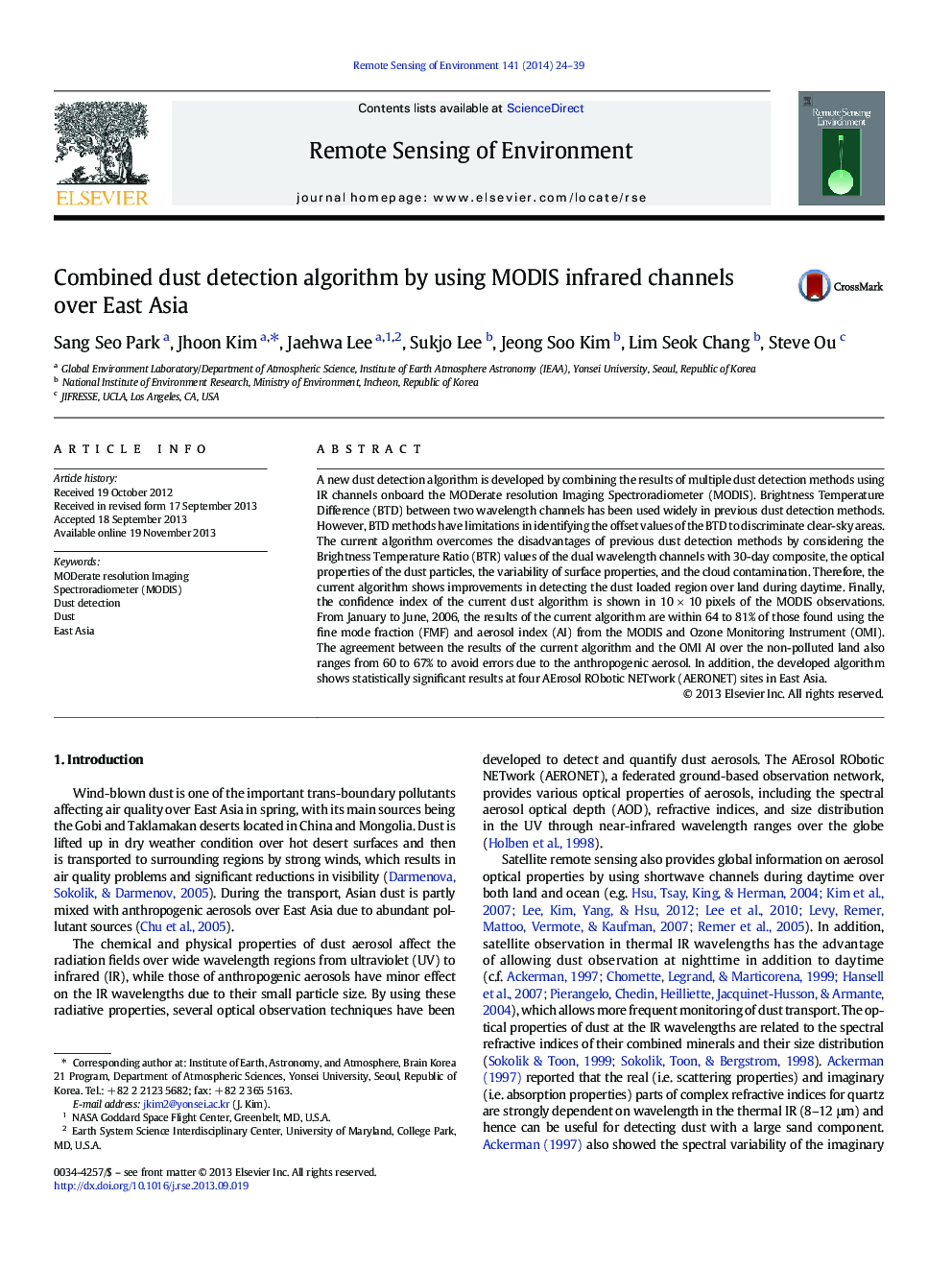| Article ID | Journal | Published Year | Pages | File Type |
|---|---|---|---|---|
| 6346809 | Remote Sensing of Environment | 2014 | 16 Pages |
Abstract
A new dust detection algorithm is developed by combining the results of multiple dust detection methods using IR channels onboard the MODerate resolution Imaging Spectroradiometer (MODIS). Brightness Temperature Difference (BTD) between two wavelength channels has been used widely in previous dust detection methods. However, BTD methods have limitations in identifying the offset values of the BTD to discriminate clear-sky areas. The current algorithm overcomes the disadvantages of previous dust detection methods by considering the Brightness Temperature Ratio (BTR) values of the dual wavelength channels with 30-day composite, the optical properties of the dust particles, the variability of surface properties, and the cloud contamination. Therefore, the current algorithm shows improvements in detecting the dust loaded region over land during daytime. Finally, the confidence index of the current dust algorithm is shown in 10Â ÃÂ 10Â pixels of the MODIS observations. From January to June, 2006, the results of the current algorithm are within 64 to 81% of those found using the fine mode fraction (FMF) and aerosol index (AI) from the MODIS and Ozone Monitoring Instrument (OMI). The agreement between the results of the current algorithm and the OMI AI over the non-polluted land also ranges from 60 to 67% to avoid errors due to the anthropogenic aerosol. In addition, the developed algorithm shows statistically significant results at four AErosol RObotic NETwork (AERONET) sites in East Asia.
Related Topics
Physical Sciences and Engineering
Earth and Planetary Sciences
Computers in Earth Sciences
Authors
Sang Seo Park, Jhoon Kim, Jaehwa Lee, Sukjo Lee, Jeong Soo Kim, Lim Seok Chang, Steve Ou,
